Environmental embrittlement behavior of high-entropy alloys
Abstract
High entropy alloys (HEAs), as a new class of structural materials, have attracted extensive interest from numerous metallurgical scientists and engineers. Benefiting from their unique microstructural features and outstanding mechanical performance, HEAs have shown significant potential for applications in many engineering fields, even under extreme conditions. In particular, when exposed to hydrogen and/or intermediate-temperature environments, these HEAs inevitably suffer from severe environmental embrittlement (EE) issues, e.g., hydrogen embrittlement (HE) and intermediate-temperature embrittlement (ITE), resulting in serious premature intergranular failure. In this work, we critically review the state-of-the-art advances of EE in previously reported HEA systems. Particular focus is given to novel strategies to enhance the resistance to EE in different HEAs. Two critical embrittlement phenomena, namely, HE and ITE, are highlighted separately. Finally, we provide perspectives on future research directions and opportunities for EE-resistant HEAs.
Keywords
INTRODUCTION
High-performance structural materials with promising strength and ductility combinations are highly desirable for a wide range of engineering applications[1-4]. Distinct from traditional single-principal-element-guided materials, like steels[5-8], aluminum alloys[9,10], titanium alloys[11,12] and Co/Ni-based superalloys[13-17], the multiple-principal-element paradigm has significantly motivated the rapid development of a new class of metallic structural materials, namely, high-entropy alloys (HEAs), which are also known as multi-principal-component and chemically complex alloys[18-22].
Given their extraordinary physical, thermal and mechanical properties[23-25], emerging HEAs have been expected to benefit many potential engineering applications in the aerospace, automotive, nuclear power, petrochemical and electronic manufacturing fields, as well as many other industries[26-28]. Like most conventional metallic alloys[29,30], HEAs unavoidably face enormous challenges regarding environmental embrittlement (EE) failure, which is critical to the safety and reliability of engineering structures. Intermediate-temperature embrittlement (ITE) and hydrogen embrittlement (HE) are considered to be two crucial EE issues in various advanced metallic structural materials[31-38]. Specifically, due to the synergetic effect of the local stress concentration in the vicinity of grain boundaries (GBs) and environmental GB attacks, most polycrystalline high-temperature structural alloys often undergo serious intergranular embrittlement in intermediate-temperature regimes (i.e., 600-800 °C)[39,40]. Similarly, when exposed to hydrogen environments, the deformation capability of some once ductile metallic alloys dramatically degraded, resulting in poor fracture resistance and intergranular failures[41-46]. This is because the hydrogen generally traps at the GBs and then reduces their cohesive strength. The nucleation and propagation of cracks preferentially occur at GBs during tensile deformation, consequently leading to intergranular fracture[47,48].
Notably, such undesired EE behavior, including HE and ITE, has been frequently observed in different HEA systems[39,49]. To date, many research groups have devoted their efforts to addressing EE problems in new types of HEAs and have made significant achievements. Therefore, in this study, we provide an overview of the recent important discoveries in the EE of representative HEAs. Two major types of typical EE (ITE and HE) behavior and mechanisms (or microstructural factors) are discussed separately, as schematically illustrated in Figure 1. The key strategies for improving the resistance to EE in the HEA systems are highlighted. In this review, different HEA systems are introduced and discussed, as presented in Table 1. Finally, the challenges and future research trends for the development of EE-resistant HEAs are briefly summarized.
Figure 1. Schematic showing EE phenomena and associated microstructural factors. EE: Environmental embrittlement.
Summary of different categories of HEAs (at.%)
| EE issues | HE | ITE |
| HEA systems | Equiatomic CoCrNi | 39.9Ni-20Co-30Fe-6Al-4Ti-0.1B |
| Equiatomic CoNiV | 29.9Ni-30Co-13Fe-15Cr-6Al-6Ti-0.1B | |
| Equiatomic FeCoCrNiMn | 46.23Ni-23Co-10Cr-5Fe-8.5Al-4Ti-2W-1Mo-0.15C-0.1B-0.02Zr | |
| 97(CoCrNi)-3Mo | 100-x(NbMoTaW)-xB | |
| Equiatomic FeCoCrNi | ||
| 45Fe-35Mn-10Co-10Cr | ||
| 50Fe-30Mn-10Cr-10Co |
HE MECHANISMS AND MITIGATION STRATEGIES IN HEA SYSTEMS
In this section, we summarize the significant progress made in the development of HE-resistant HEAs and the associated governing mechanisms and novel strategies.
In the past few years, numerous studies on HE resistance have been mainly focused on single-phase HEAs, such as the CoCrNi, CoNiV and FeCoCrNiMn systems[49-52]. Generally, hydrogen diffuses into alloys and can be introduced via electrochemical and gas hydrogen charging. Here, we summarize the HE behavior of HEAs in different hydrogen charging approaches. For the former case, when hydrogen is incorporated via electrochemical hydrogen charging, Soundararajan et al. demonstrated a relatively high HE resistance of an equiatomic CoCrNi medium entropy alloy (MEA) with ultimate tensile strength as high as ~1 GPa, as shown in Figure 2A[51]. The authors argued that the superior HE resistance is primarily attributed to the enhanced dynamic strain hardening caused by hydrogen-promoted mechanical nanotwinning [Figure 2B]. However, an inconsistent observation of this equiatomic CoCrNi MEA can be found under gas hydrogen charging, where the CoCrNi MEA displayed a pronounced ductility reduction (~70.9%) compared to the uncharged sample. Interestingly, it was further shown that boron doping (400 at. ppm) can obviously decrease the hydrogen-induced ductility loss (~45.8%) in this MEA, which is basically ascribed to the GB decoration of boron [Figure 2C-E]. The boron segregation not only significantly increases the cohesive strength of GBs but also reduces the hydrogen diffusivity along GBs, resulting in improved HE resistance[49]. Therefore, it should be noted that different hydrogen charging approaches can create distinctive mechanical responses in the same HEA. This is because hydrogen atoms are largely concentrated on the surface region of the samples via electrochemical charging, whereas hydrogen is more homogeneously distributed in the gas hydrogen-charged samples[53]. In addition to the effect of boron on the resistance to HE, it was also reported that a small addition of boron (0.2-1.6 at.%) can improve the malleability of brittle eutectic HEAs, which is primarily attributed to the transition in eutectic morphology from lamellar eutectic to dendrite eutectic. Such a transition is believed to result from the increased constitutional undercooling caused by boron additions[54].
Figure 2. Tensile properties and associated mechanisms of equiatomic CoCrNi MEA under different hydrogen-charged conditions.
Additionally, the HE resistance of the equiatomic CoCrNi MEA can be further enhanced via Mo doping
Figure 3. Superior tensile properties and deformation microstructures of hydrogen charged 97(CoCrNi)-3Mo samples. (A) Engineering stress-strain curves of Mo-doped and undoped CoCrNi alloys with and without hydrogen. (B and C) Microstructures of hydrogen-charged 97(CoCrNi)-3Mo alloy near the fracture surface showing high-density NTs. Note that hydrogen charging was performed in a 100 MPa hydrogen gas environment at 200 °C for a duration of 160 h (Reproduced with permission[55]. Copyright 2021, Elsevier). NTs: Nanotwins.
In addition to the CoCrNi MEA system, Luo et al. investigated the hydrogen effect on a strong and ductile CoNiV MEA under electrochemical hydrogen charging[52]. The results show that only a marginal reduction can be found in the hydrogen-charged sample, indicating the excellent HE resistance of the CoNiV MEA. Such a good combination of properties could be ascribed to four effects: (I) the single face-centered cubic (FCC) phase minimizes the local micromechanical contrast for hydrogen accumulation; (II) the solid solution elements give rise to a sluggish diffusion of hydrogen and no hydride is formed; (III) the hydrogen-induced decrease in stacking fault energy promotes the formation of NTs for increased work hardening; and (IV) the dense surface oxide film can keep the hydrogen from being absorbed and thus improves the HE resistance[52].
It is noteworthy that similar mechanisms and/or strategies (i.e., tailoring of diffusion kinetics, regulation of GB features, and so on) have been reported in other alloy systems like Al alloys and steels[57-59]. For instance, Li et al. simultaneously achieved the improved mechanical strength and corrosion resistance of Mg-Li-Al alloy by solid solution treatment because of the low diffusion kinetics of the solid solution phase[57]. Furthermore, the stress corrosion cracking resistance and the strength of the 7056 Al alloy with a high content of Zn were also concurrently enhanced by tailoring GB architectures (i.e., the formation of GB precipitates)[58].
In contrast to the above single-phase HEAs, Ronchi et al. demonstrated that hydrogen can produce a phase transformation in the metastable 45Fe-35Mn-10Co-10Cr (at.%) HEA[28]. Based on microstructural characterization [Figure 4], it was found that hydrogen induces the γ- to ε-martensite phase transformation in the metastable HEA, which preferentially occurs in the <101> and <111> oriented grains along Σ3 coincident site lattice boundaries. Additionally, high concentrations of hydrogen can promote the formation of the extension twinning within the martensite[28], which may further contribute to enhancing the HE resistance. Unfortunately, the mechanical response of the metastable HEA with hydrogen charging was not demonstrated in the study.
Figure 4. Hydrogen-induced phase transformations and schematic overview of metastable 45Fe-35Mn-10Co-10Cr HEA. (A-C) Electron backscatter diffraction (EBSD) phase maps of no-hydrogen charging after 55 h of hydrogen charging and 106 h of hydrogen charging. (D) Image quality map of a hydrogen-charged sample for 106 h. (E) Enlarged region with hydrogen-induced twins is highlighted in red. (F) Point-to-point misorientation across a hydrogen-induced twin[28].
Additionally, the effects of hydrogen on the mechanical response and embrittlement behavior of stable and metastable HEAs (i.e., 20Fe-20Mn-20Ni-20Cr-20Co and 50Fe-30Mn-10Cr-10Co, at.%, respectively) pre-charged with 100 MPa hydrogen gases have been experimentally investigated. Figure 5A and B show the engineering stress-strain curves of the stable and metastable HEA with and without hydrogen charging, respectively. Both HEAs with hydrogen charging exhibited severe degradation in tensile plasticity. It was found that hydrogen-assisted cracking of the metastable HEA occurred via localized plasticity for both the austenite and ε-martensite phases [Figure 5C-F][60].
Figure 5. Tensile mechanical responses and corresponding micro-mechanisms of stable and metastable HEAs under gas hydrogen charging conditions. (A and B) Engineering stress-strain curves of stable and metastable HEAs with and without hydrogen.
Moreover, regardless of electrochemical and gas hydrogen charging, the equiatomic FeCoCrNiMn HEA system shows superior resistance to HE when compared with typical steels, i.e., 304, 316L and X80[50,61,62], which is expected to be an important candidate for HE-resistant HEAs. Thereafter, extensive efforts have been devoted to further enhancing the HE resistance of the FeCoCrNiMn HEA by tailoring its architectures[50,63-65]. For example, as shown in Figure 6A, through hydrogen-induced gradient NT structures, the equiatomic FeCoCrNiMn HEA demonstrated an excellent property combination at 77 K[63]. Furthermore, the gradient-structured FeCoCrNiMn HEA shows both high yield stress (500-700 MPa) and good ductility (15%-33%) under hydrogen environments [Figure 6B], where the gradient structures containing surface NTs are introduced via the surface mechanical attrition treatment technique[66]. Additionally, it was reported that grain refinement can also contribute to improving the HE resistance of equiatomic FeCoCrNiMn and FeCoCrNi HEAs[64,65]. Specifically, the hydrogen-charged FeCoCrNiMn HEA with an average grain size of 1.9 μm exhibited a high tensile strength that was 1.5 times greater than that of the hydrogen-charged HEA with a grain size of 22 μm and there was no significant decrease in tensile elongation [Figure 6C and D][64]. Moreover, as shown in Figure 6E, incorporating the modified cellular structures by selective laser melting and annealing treatment can also effectively improve the HE resistance of the FeCoCrNiMn alloy[67]. Such excellent resistance to HE is ascribed to the delayed crack initiation and propagation by hydrogen-enhanced local plasticity with the formation of NTs and dislocation cells [Figure 6F]. These above strategies should be further explored in many other HEA systems, like CoCrNi, CoNiV, and so on.
Figure 6. Enhanced HE resistance of FeCoCrNiMn HEA system via regulation of microstructural features. (A and B) Hydrogen-induced gradient NT structures (electrochemical hydrogen charging and tension) (Reproduced with permission[63]. Copyright 2018, Elsevier) (Reproduced with permission[66]. Copyright 2022, Elsevier). (C and D) Fine grain structures (gas hydrogen charging and tension) (Reproduced with permission[64]. Copyright 2019, Elsevier). (E and F) Modified cellular structures (electrochemical hydrogen charging and tension) (Reproduced with permission[67]. Copyright 2021, Elsevier). HE: Hydrogen embrittlement; HEA: high entropy alloy.
Despite the experimental evidence that HEAs exhibit excellent HE resistance, the atomic mechanisms of HE in HEA systems have further been investigated through multiscale simulations and calculations[68,69].
Figure 7. Mechanism and prediction of HE in various alloy systems. (A) Schematic of embrittlement process at crack tip. (B) Schematic of crack tip hydrogen concentrations Ccleave and Cemit that control embrittlement as a function of KIapp. (C) Predicted embrittlement due to nanodiffusion and blocking of dislocation emission: KIapp reaches KIC prior to reaching KIe. (D) Predicted embrittled and unembrittled domains of hydrogen concentration for six alloys and Ni. The transition region corresponding to the upper and lower limits of KIe is indicated by thick black lines (Reproduced with permission[68]. Copyright 2021, American Physical Society). HE: Hydrogen embrittlement.
ITE MECHANISMS AND STRATEGIES FOR HEA SYSTEMS
In this section, the significant progress in the design of ITE-resistant HEAs and the associated underlying dominant mechanisms are summarized. Among recently developed HEA systems, it has been extensively recognized that coherent L12-type precipitate-strengthened HEAs are some of the most promising candidates for high-temperature structural applications due to their exceptional thermal and mechanical properties at a wide range of temperatures[20,70-72]. Unfortunately, like many high-strength metallic structural materials, such L12-strengthened HEAs also usually exhibit temperature-dependent premature tensile failure. As shown in Figure 8, it has been claimed that environmentally (i.e., oxygen)-assisted GB damage plays a vital role in premature intergranular failure at intermediate-temperature regimes[39,73]. Additionally, the potentially formed second phases at GBs also act as sites for crack initiation and propagation, leading to brittle intergranular fracture during tensile deformation[39].
Figure 8. Oxygen-assisted failure mechanism in various HEA systems at intermediate-temperature regimes. Tensile curves of
Therefore, extensive efforts have been made to overcome this ITE issue in these L12-strengthened HEAs. Several advances have demonstrated that the ITE resistance can be effectively improved in some typical HEA systems through careful compositional optimization and structural regulation. For the former, it was found that Cr doping can introduce compact protective oxide layers in a 39.9Ni-20Co-(30-x)Fe-xCr-6Al-4Ti-0.1B (at.%) HEA, which not only improves the oxidation resistance of the HEA but also hinders the inward oxygen diffusion and thus results in a substantial increase in tensile plasticity at 600 °C
Figure 9. Overcoming ITE phenomena in L12-strengthened HEAs under tensile deformation via compositional optimization and structural regulation. (A) Cr doping enhanced tensile ductility at 600 °C. (B) Compact protective oxide layers introduced by the addition of Cr (Reproduced with permission[73]. Copyright 2022, Elsevier). (C) Elimination of brittle precipitates (Heusler phases) at GBs via a duplex-aging treatment (Reproduced with permission[26]. Copyright 2020, Elsevier). (D) Incorporation of heterogenous-columnar grain structures by controlling recrystallization durations (Reproduced with permission[74]. Copyright 2021, Elsevier).
In addition, it is noteworthy that the serrated grain boundary (SEG) architectures can effectively solve this intergranular premature cracking issue in an L12-strengthened HEA (46.23Ni-23Co-10Cr-5Fe-8.5Al-4Ti-2W-1Mo-0.15C-0.1B-0.02Zr, at.%) at 1000 °C. This kind of HEA with SEG structures shows a brittle-to-ductile transition and achieves a superior strength as high as ~260 MPa while maintaining a uniform elongation of ~6.5% [Figure 10][75]. This finding further demonstrates that SEGs can produce enhanced resistance to intergranular crack nucleation and propagation at higher temperatures.
Figure 10. Tensile properties of straight grain boundary (STG)-MNiHEA and SEG-MNiHEA samples at (A) room temperature and
In addition to intergranular embrittlement in the intermediate-temperature regimes, some refractory HEAs also suffer from obvious brittleness at room temperature[76], which is essentially attributed to the GB segregation of the oxygen contaminant during fabrication, thereby weakening GB cohesion. Wang et al. reported that GB engineering with the addition of either metalloid B or C in a NbMoTaW refractory HEA can effectively alleviate the GB brittleness and changes the fracture morphology from intergranular to transgranular fracture[76]. The doped small-sized metalloids preferentially replace oxygen at GBs and promote stronger electronic interaction with the host metals [Figure 11][76]. As earlier, a similar strategy has been reported to improve the HE resistance because of boron segregation at GBs[49].
Figure 11. (A) Stress-strain curves of as-cast base refractory HEA (black) and doped HEAs with different contents of boron at room temperature under compression. (B) One-dimensional concentration profiles across a GB for the 5000 ppm (0.5 at.%) doped refractory HEA (Reproduced with permission[76]. Copyright 2022, Elsevier). HEAs: High entropy alloys.
OUTLOOK AND FUTURE WORK
As a new class of structural materials, HEAs have demonstrated distinctive microstructural architectures and promising mechanical properties, which hold significant potential for a wide of engineering applications. As summarized above, when exposed to hydrogen and/or immediate-temperature environments, these HEAs often display a serious premature embrittlement issue, like HE and/or ITE, raising enormous challenges for their practical structural applications. In this situation, more fundamental and comprehensive studies should be systematically carried out to further promote the innovation of novel high-performance HEAs together with superior EE resistance. Here, we briefly summarize several crucial issues and give some research directions on advanced structural HEAs with extraordinary EE resistance for future work.
(1) Previous efforts have been primarily focused on the development of HE-resistant steels and Al alloys[30,42,77]. The discovery of the HEAs opens a new pathway for the design of HE-resistant alloys, especially for single-phase NiCoCr and FeCoCrNiMn. However, unlike conventional alloys, such HEA systems exhibit complex structures and substantial compositional constitutions, which could significantly influence hydrogen diffusion and the associated mechanical responses. Therefore, the effects of structures (i.e., phase structures, vacancies and dislocations) and constitutions (substitutional and interstitial atoms) in HEAs on hydrogen-induced mechanical behavior and the underlying mechanisms should be carefully studied. Notably, a quantitative model has been proposed by Nag et al. and Kamachali et al., which demonstrated that the solute-solute interactions and internal stresses can significantly affect the thermodynamic properties and strengthening mechanisms of HEA systems[78,79]. If the H atoms are incorporated into the HEAs with highly-diverse chemistries, the effects of complex chemistry on the mechanical responses and deformation mechanisms in the HEAs with H atoms should be experimentally and theoretically carried out. The role of complex chemistry in the formation of “surfaces” in crack formation and propagation also needs to be explored.
(2) As earlier demonstrated, hydrogen atoms are preferentially partitioned into GBs and then reduce the cohesive strength of GBs. Therefore, the structural features of GBs play a key role in determining the HE resistance of alloys. Based on this, it could be an effective routine to achieve enhanced HE resistance in HEAs via elaborately designing the GB architectures (e.g., introducing precipitates at GBs and creating GB segregation). Therefore, further research should be focused on the innovative design of novel GB structures in the HEAs.
(3) For HE-resistant materials, hydrogen local concentration is a critical parameter in governing the resistance to HE. When exposed to hydrogen environments for sufficient durations, a low hydrogen concentration stems basically from low hydrogen solubility and sluggish hydrogen diffusion in most metallic alloy systems. Therefore, the effect of a specific element on hydrogen solubility and hydrogen diffusion in different HEA systems should be systematically investigated. We believe that studies along this direction could help to significantly accelerate the design of HEAs that are intrinsically resistant to HE.
(4) It is well known that atomic-scale microstructural traps can substantially limit hydrogen diffusion. For instance, Chen et al. showed that hydrogen can be trapped in the core of finely dispersed V-Mo-Nb carbides in ferritic steels[30]. Furthermore, it was also reported that hydrogen concentration is observed at carbon-rich dislocations and incoherent interfaces between niobium carbides and the surrounding steel[80]. Therefore, it could be an effective strategy to enhance the resistance to HE in HEAs via engineering hydrogen traps, i.e., nanoscale carbides and low-energy dislocation nanostructures[81]. In addition, state-of-the-art microstructural characterization techniques like cryogenic atom probe tomography should be employed to directly observe the hydrogen distribution of HEA systems.
(5) Similar to Ni-based superalloys, L12-strengthened HEAs have shown significant promise in high-temperature applications. However, it has been recognized that oxygen-assisted GB damage plays an important role in the ITE issue. Therefore, improving oxidation resistance may be an efficient avenue that can hinder the oxygen-accelerated GB damage. Furthermore, as earlier reported, serrated GBs and columnar-like grains can effectively address the ITE issues. It should be noted that such unique GB structures can greatly reduce the diffusion kinetics of the oxygen and then delay intergranular cracking. As a result, careful tailoring of GB features should be carried out to further improve the resistance to ITE in HEAs. In contrast, it has been recognized that creating hydrogen traps and reducing diffusion kinetics can effectively improve the resistance to HE. We expect that L12-strengthened HEAs with unique GB features are also highly HE resistant, owing to the suppressed diffusion kinetics (serrated GBs and columnar-like grains) and high-density hydrogen traps (L12/matrix interfaces).
(6) At the present time, studies are mainly focused on the static tensile properties of the HEAs with hydrogen charging and intermediate temperatures. More importantly, the dynamic mechanical properties (fatigue, creep and fatigue/creep crack propagation) should be evaluated under in-situ hydrogen gas charging environments and intermediate temperatures. Subsequently, associated physical-based lifetime prediction models of HEAs should be developed. These studies are expected to ensure the reliability and safety of EE-resistant HEAs in engineering applications.
CONCLUSIONS
HEAs have received growing interest from metallurgical scientists and engineers due to their special microstructures and superb mechanical properties, which can potentially be used in many important engineering fields, including aerospace, nuclear power and chemical processing applications. In the present work, we have critically reviewed the recent major achievements in EE behavior and the associated underlying mechanisms of HEAs. In particular, two critical EE phenomena (HE and ITE) have been separately summarized. The representative HE- and ITE-resistant HEAs and the corresponding micro-mechanisms have been discussed in detail. Although some advances have been achieved, research on this topic is only just starting to develop at present and there are numerous unaddressed critical issues. In future work, to further accelerate the design of novel HEAs with superior resistance to HE and/or ITE, significant efforts should be made to fundamentally elucidate the hydrogen (oxygen) diffusion behavior and associated static/dynamic mechanical responses of HEAs. In the meantime, compositional optimization and structural regulation should be systematically studied to improve the resistance to HE and ITE of HEAs. Finally, atomic-scale microstructural characterizations are required to directly observe the hydrogen distribution and better understand the HE mechanism in HEA systems.
DECLARATIONS
Authors’ contributions
Organized the literature review and drafted the original version: Xiao B, Yang T
Revised the manuscript: Liu S, Zhang J, Zhou Y, Li Q, Hou J, Xiao W, Zhang J, Zhao Y, Liu CT, Xu L
Conceived and supervised the project: Yang T, Zhao Y
Availability of data and materials
Not applicable.
Financial support and sponsorship
This project was financially supported by the Hong Kong Research Grant Council (RGC) (Grant No. CityU 21205621, 11214820, 11209021, and C1017-21G), the National Natural Science Foundation of China (Grant No. 52101151 and 52101135), and the Shenzhen Science and Technology Program (Grant No. SGDX20210823104002016 and RCBS20210609103202012).
Conflicts of interest
All authors declared that there are no conflicts of interest.
Ethical approval and consent to participate
Not applicable.
Consent for publication
Not applicable.
Copyright
© The Author(s) 2023.
REFERENCES
1. Jiang S, Wang H, Wu Y, et al. Ultrastrong steel via minimal lattice misfit and high-density nanoprecipitation. Nature 2017;544:460-4.
2. Liu G, Zhang GJ, Jiang F, et al. Nanostructured high-strength molybdenum alloys with unprecedented tensile ductility. Nat Mater 2013;12:344-50.
3. Liddicoat PV, Liao XZ, Zhao Y, et al. Nanostructural hierarchy increases the strength of aluminium alloys. Nat Commun 2010;1:63.
4. Nutor RK, Cao Q, Wei R, et al. A dual-phase alloy with ultrahigh strength-ductility synergy over a wide temperature range. Sci Adv 2021;7:eabi4404.
5. He BB, Hu B, Yen HW, et al. High dislocation density-induced large ductility in deformed and partitioned steels. Science 2017;357:1029-32.
6. Kong H, Jiao Z, Lu J, Liu CT. Low-carbon advanced nanostructured steels: microstructure, mechanical properties, and applications. Sci China Mater 2021;64:1580-97.
7. Kürnsteiner P, Wilms MB, Weisheit A, Gault B, Jägle EA, Raabe D. High-strength damascus steel by additive manufacturing. Nature 2020;582:515-9.
8. Xiao B, Xu L, Cayron C, Xue J, Sha G, Logé R. Solute-dislocation interactions and creep-enhanced Cu precipitation in a novel ferritic-martensitic steel. Acta Mater 2020;195:199-208.
9. Zhang Q, Zhu Y, Gao X, Wu Y, Hutchinson C. Training high-strength aluminum alloys to withstand fatigue. Nat Commun 2020;11:5198.
10. Wu G, Liu C, Sun L, et al. Hierarchical nanostructured aluminum alloy with ultrahigh strength and large plasticity. Nat Commun 2019;10:5099.
11. Zhang T, Huang Z, Yang T, et al. In situ design of advanced titanium alloy with concentration modulations by additive manufacturing. Science 2021;374:478-82.
12. Zhang J, Liu Y, Sha G, et al. Designing against phase and property heterogeneities in additively manufactured titanium alloys. Nat Commun 2022;13:4660.
13. Suzuki A, Inui H, Pollock TM. L12-strengthened cobalt-base superalloys. Annu Rev Mater Res 2015;45:345-68.
14. Pollock TM, Dibbern J, Tsunekane M, Zhu J, Suzuki A. New co-based γ-γ′ high-temperature alloys. JOM 2010;62:58-63.
15. Sato J, Omori T, Oikawa K, Ohnuma I, Kainuma R, Ishida K. Cobalt-base high-temperature alloys. Science 2006;312:90-1.
16. Smith TM, Esser BD, Antolin N, et al. Phase transformation strengthening of high-temperature superalloys. Nat Commun 2016;7:13434.
17. Ju J, Shen Z, Kang M, Zhang J, Wang J. On the preferential grain boundary oxidation of a Ni-Co-based superalloy. Corros Sci 2022;199:110203.
18. Ding Q, Zhang Y, Chen X, et al. Tuning element distribution, structure and properties by composition in high-entropy alloys. Nature 2019;574:223-7.
19. Fan L, Yang T, Zhao Y, et al. Ultrahigh strength and ductility in newly developed materials with coherent nanolamellar architectures. Nat Commun 2020;11:6240.
20. Yang T, Zhao YL, Tong Y, et al. Multicomponent intermetallic nanoparticles and superb mechanical behaviors of complex alloys. Science 2018;362:933-7.
21. Wei S, Kim SJ, Kang J, et al. Natural-mixing guided design of refractory high-entropy alloys with as-cast tensile ductility. Nat Mater 2020;19:1175-81.
22. Miracle D, Senkov O. A critical review of high entropy alloys and related concepts. Acta Mater 2017;122:448-511.
23. Feng R, Rao Y, Liu C, et al. Enhancing fatigue life by ductile-transformable multicomponent B2 precipitates in a high-entropy alloy. Nat Commun 2021;12:3588.
24. Chen S, Aitken ZH, Pattamatta S, et al. Simultaneously enhancing the ultimate strength and ductility of high-entropy alloys via short-range ordering. Nat Commun 2021;12:4953.
25. Xiao B, Luan J, Zhao S, et al. Achieving thermally stable nanoparticles in chemically complex alloys via controllable sluggish lattice diffusion. Nat Commun 2022;13:4870.
26. Yang T, Zhao Y, Fan L, et al. Control of nanoscale precipitation and elimination of intermediate-temperature embrittlement in multicomponent high-entropy alloys. Acta Mater 2020;189:47-59.
27. Li X, Yin J, Zhang J, et al. Hydrogen embrittlement and failure mechanisms of multi-principal element alloys: A review. J Mater Sci Technol 2022;122:20-32.
28. Ronchi MR. Hydrogen-induced transformations in metastable high entropy alloys. Available from: https://dspace.mit.edu/handle/1721.1/139329 [Last accessed on 16 Nov 2022].
29. Xu Y, Toda H, Shimizu K, et al. Suppressed hydrogen embrittlement of high-strength Al alloys by Mn-rich intermetallic compound particles. Acta Mater 2022;236:118110.
30. Chen YS, Haley D, Gerstl SS, et al. Direct observation of individual hydrogen atoms at trapping sites in a ferritic steel. Science 2017;355:1196-9.
31. López Freixes M, Zhou X, Zhao H, et al. Revisiting stress-corrosion cracking and hydrogen embrittlement in 7xxx-Al alloys at the near-atomic-scale. Nat Commun 2022;13:4290.
32. Chung H, Huh J, Jung W. Intermediate temperature brittleness of Ni based superalloy Nimonic263. Mater Charact 2018;140:9-14.
33. Jiang L, Ye X, Cui C, et al. Intermediate temperature embrittlement of one new Ni-26W-6Cr based superalloy for molten salt reactors. Mater Sci Eng A 2016;668:137-45.
34. Yin S, Cheng G, Chang TH, Richter G, Zhu Y, Gao H. Hydrogen embrittlement in metallic nanowires. Nat Commun 2019;10:2004.
35. Song J, Curtin WA. Atomic mechanism and prediction of hydrogen embrittlement in iron. Nat Mater 2013;12:145-51.
36. Bechtle S, Kumar M, Somerday B, Launey M, Ritchie R. Grain-boundary engineering markedly reduces susceptibility to intergranular hydrogen embrittlement in metallic materials. Acta Mater 2009;57:4148-57.
37. Zheng L, Schmitz G, Meng Y, Chellali R, Schlesiger R. Mechanism of intermediate temperature embrittlement of Ni and Ni-based superalloys. Crit Rev Solid State Mater Sci 2012;37:181-214.
38. Wang C, Cao QP, Wang XD, et al. Intermediate temperature brittleness in metallic glasses. Adv Mater 2017;29:1605537.
39. Cao B, Wei D, Zhang X, et al. Intermediate temperature embrittlement in a precipitation-hardened high-entropy alloy: the role of heterogeneous strain distribution and environmentally assisted intergranular damage. Mater Today Phys 2022;24:100653.
40. Zheng L, Chellali R, Schlesiger R, et al. Intermediate temperature embrittlement in high-purity Ni and binary Ni(Bi) alloy. Scr Mater 2011;65:428-31.
41. Sun B, Lu W, Gault B, et al. Chemical heterogeneity enhances hydrogen resistance in high-strength steels. Nat Mater 2021;20:1629-34.
42. Zhao H, Chakraborty P, Ponge D, et al. Hydrogen trapping and embrittlement in high-strength Al alloys. Nature 2022;602:437-41.
43. Wang S, Martin ML, Sofronis P, Ohnuki S, Hashimoto N, Robertson IM. Hydrogen-induced intergranular failure of iron. Acta Mater 2014;69:275-82.
44. Koyama M, Tasan CC, Akiyama E, Tsuzaki K, Raabe D. Hydrogen-assisted decohesion and localized plasticity in dual-phase steel. Acta Mater 2014;70:174-87.
48. Pouillier E, Gourgues A, Tanguy D, Busso E. A study of intergranular fracture in an aluminium alloy due to hydrogen embrittlement. Int J Plast 2012;34:139-53.
49. Chen XH, Zhuang XQ, Mo JW, et al. Enhanced resistance to hydrogen embrittlement in a CrCoNi-based medium-entropy alloy via grain-boundary decoration of boron. Mater Res Lett 2022;10:278-86.
50. Zhao Y, Lee D, Seok M, et al. Resistance of CoCrFeMnNi high-entropy alloy to gaseous hydrogen embrittlement. Scr Mater 2017;135:54-8.
51. Soundararajan CK, Luo H, Raabe D, Li Z. Hydrogen resistance of a 1 GPa strong equiatomic CoCrNi medium entropy alloy. Corros Sci 2020;167:108510.
52. Luo H, Sohn SS, Lu W, et al. A strong and ductile medium-entropy alloy resists hydrogen embrittlement and corrosion. Nat Commun 2020;11:3081.
53. Lee J, Lee J. The effect of lattice defects induced by cathodic hydrogen charging on the apparent diffusivity of hydrogen in pure iron. J Mater Sci 1987;22:3939-48.
54. Yin Y, Tan Q, Wang T, et al. Eutectic modification of Fe-enriched high-entropy alloys through minor addition of boron. J Mater Sci 2020;55:14571-87.
55. Yi J, Zhuang X, He J, He M, Liu W, Wang S. Effect of Mo doping on the gaseous hydrogen embrittlement of a CoCrNi medium-entropy alloy. Corros Sci 2021;189:109628.
56. Li Q, Mo J, Ma S, et al. Defeating hydrogen-induced grain-boundary embrittlement via triggering unusual interfacial segregation in FeCrCoNi-type high-entropy alloys. Acta Mater 2022;241:118410.
57. Li C, Liu X, Dong L, et al. Simultaneously improved mechanical strength and corrosion resistance of Mg-Li-Al alloy by solid solution treatment. Mater Lett 2021;301:130305.
58. Zhou L, Chen K, Chen S, Ding Y, Fan S. Correlation between stress corrosion cracking resistance and grain-boundary precipitates of a new generation high Zn-containing 7056 aluminum alloy by non-isothermal aging and re-aging heat treatment. J Alloys Compd 2021;850:156717.
59. Pan S, Yuan J, Linsley C, Liu J, Li X. Corrosion behavior of nano-treated AA7075 alloy with TiC and TiB2 nanoparticles. Corros Sci 2022;206:110479.
60. Ichii K, Koyama M, Tasan CC, et al. Comparative study of hydrogen embrittlement in stable and metastable high-entropy alloys. Scr Mater 2018;150:74-7.
61. Pu Z, Chen Y, Dai L. Strong resistance to hydrogen embrittlement of high-entropy alloy. Mater Sci Eng A 2018;736:156-66.
62. Luo H, Li Z, Raabe D. Hydrogen enhances strength and ductility of an equiatomic high-entropy alloy. Sci Rep 2017;7:9892.
63. Luo H, Lu W, Fang X, Ponge D, Li Z, Raabe D. Beating hydrogen with its own weapon: Nano-twin gradients enhance embrittlement resistance of a high-entropy alloy. Mater Today 2018;21:1003-9.
64. Koyama M, Ichii K, Tsuzaki K. Grain refinement effect on hydrogen embrittlement resistance of an equiatomic CoCrFeMnNi high-entropy alloy. Int J Hydrog Energy 2019;44:17163-7.
65. Koyama M, Wang H, Verma VK, Tsuzaki K, Akiyama E. Effects of Mn content and grain size on hydrogen embrittlement susceptibility of face-centered cubic high-entropy alloys. Metall Mater Trans A 2020;51:5612-6.
66. Mohammadi A, Novelli M, Arita M, et al. Gradient-structured high-entropy alloy with improved combination of strength and hydrogen embrittlement resistance. Corros Sci 2022;200:110253.
67. Fu Z, Yang B, Gan K, et al. Improving the hydrogen embrittlement resistance of a selective laser melted high-entropy alloy via modifying the cellular structures. Corros Sci 2021;190:109695.
68. Zhou X, Tehranchi A, Curtin WA. Mechanism and prediction of hydrogen embrittlement in fcc stainless steels and high entropy alloys. Phys Rev Lett 2021;127:175501.
69. Xie Z, Wang Y, Lu C, Dai L. Sluggish hydrogen diffusion and hydrogen decreasing stacking fault energy in a high-entropy alloy. Mater Today Commun 2021;26:101902.
70. Zhao Y, Yang T, Han B, et al. Exceptional nanostructure stability and its origins in the CoCrNi-based precipitation-strengthened medium-entropy alloy. Mater Res Lett 2019;7:152-8.
71. Yang T, Zhao Y, Liu W, Kai J, Liu C. L12-strengthened high-entropy alloys for advanced structural applications. J Mater Res 2018;33:2983-97.
72. Zhao Y, Yang T, Zhu J, et al. Development of high-strength Co-free high-entropy alloys hardened by nanosized precipitates. Scr Mater 2018;148:51-5.
73. Hou J, Liu S, Cao B, et al. Designing nanoparticles-strengthened high-entropy alloys with simultaneously enhanced strength-ductility synergy at both room and elevated temperatures. Acta Mater 2022;238:118216.
74. Cao B, Kong H, Fan L, et al. Heterogenous columnar-grained high-entropy alloys produce exceptional resistance to intermediate-temperature intergranular embrittlement. Scr Mater 2021;194:113622.
75. Wu S, Yang T, Cao B, et al. Multicomponent Ni-rich high-entropy alloy toughened with irregular-shaped precipitates and serrated grain boundaries. Scr Mater 2021;204:114066.
76. Wang Z, Wu H, Wu Y, et al. Solving oxygen embrittlement of refractory high-entropy alloy via grain boundary engineering. Mater Today 2022;54:83-9.
77. Xie D, Li S, Li M, et al. Hydrogenated vacancies lock dislocations in aluminium. Nat Commun 2016;7:13341.
78. Nag S, Curtin WA. Effect of solute-solute interactions on strengthening of random alloys from dilute to high entropy alloys. Acta Mater 2020;200:659-73.
79. Kamachali R, Wang L. Elastic energy of multi-component solid solutions and strain origins of phase stability in high-entropy alloys. Scr Mater 2022;206:114226.
80. Chen YS, Lu H, Liang J, et al. Observation of hydrogen trapping at dislocations, grain boundaries, and precipitates. Science 2020;367:171-5.
Cite This Article
Export citation file: BibTeX | RIS
OAE Style
Xiao B, Liu S, Zhang J, Zhou Y, Li Q, Hou J, Xiao W, Zhang J, Zhao Y, Liu CT, Xu L, Yang T. Environmental embrittlement behavior of high-entropy alloys. Microstructures 2023;3:2023006. http://dx.doi.org/10.20517/microstructures.2022.26
AMA Style
Xiao B, Liu S, Zhang J, Zhou Y, Li Q, Hou J, Xiao W, Zhang J, Zhao Y, Liu CT, Xu L, Yang T. Environmental embrittlement behavior of high-entropy alloys. Microstructures. 2023; 3(1): 2023006. http://dx.doi.org/10.20517/microstructures.2022.26
Chicago/Turabian Style
Xiao, Bo, Shaofei Liu, Jianyang Zhang, Yinghao Zhou, Qian Li, Jinxiong Hou, Weicheng Xiao, Jixun Zhang, Yilu Zhao, Chain Tsuan Liu, Lianyong Xu, Tao Yang. 2023. "Environmental embrittlement behavior of high-entropy alloys" Microstructures. 3, no.1: 2023006. http://dx.doi.org/10.20517/microstructures.2022.26
ACS Style
Xiao, B.; Liu S.; Zhang J.; Zhou Y.; Li Q.; Hou J.; Xiao W.; Zhang J.; Zhao Y.; Liu CT.; Xu L.; Yang T. Environmental embrittlement behavior of high-entropy alloys. Microstructures. 2023, 3, 2023006. http://dx.doi.org/10.20517/microstructures.2022.26
About This Article
Copyright
Data & Comments
Data

 Cite This Article 36 clicks
Cite This Article 36 clicks




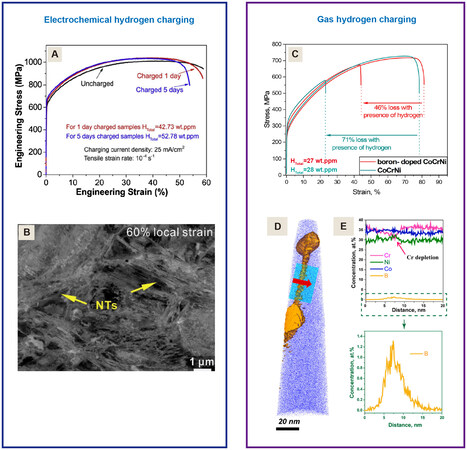

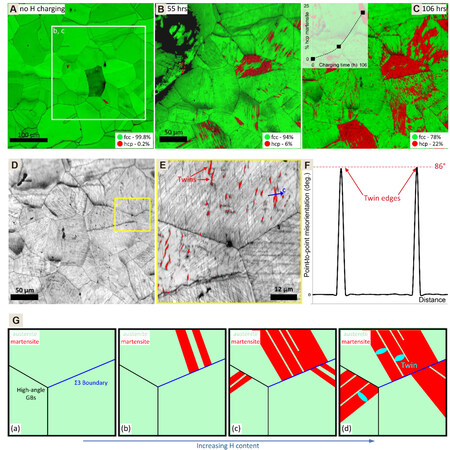

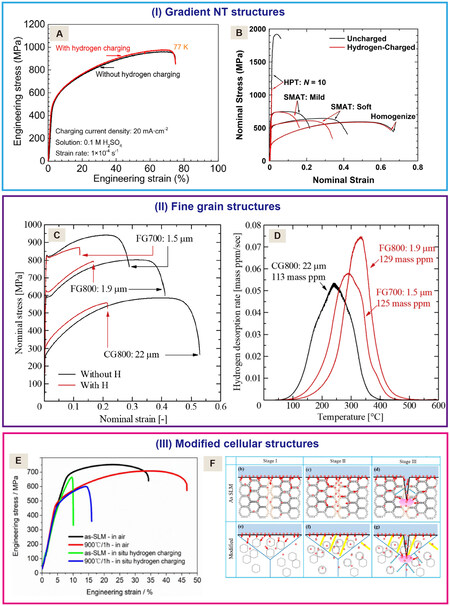
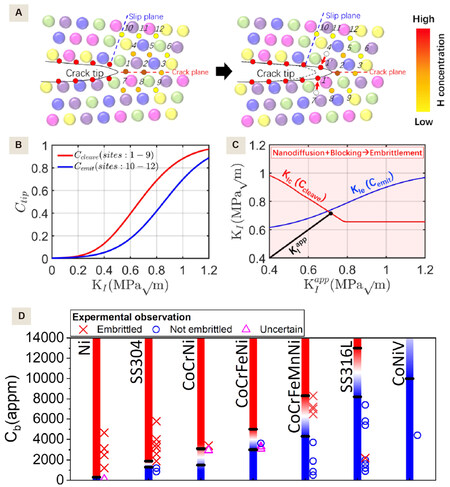
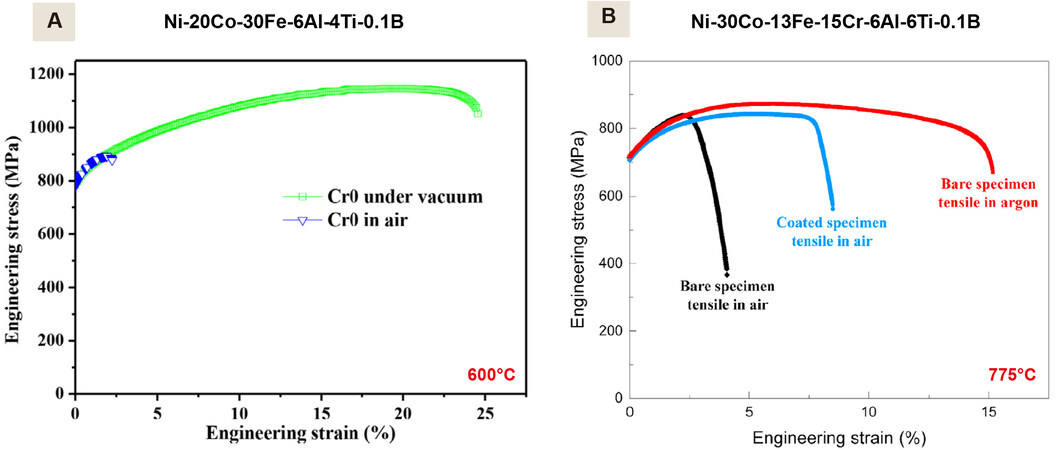

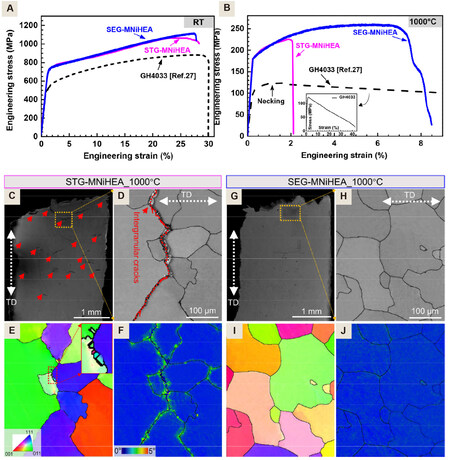
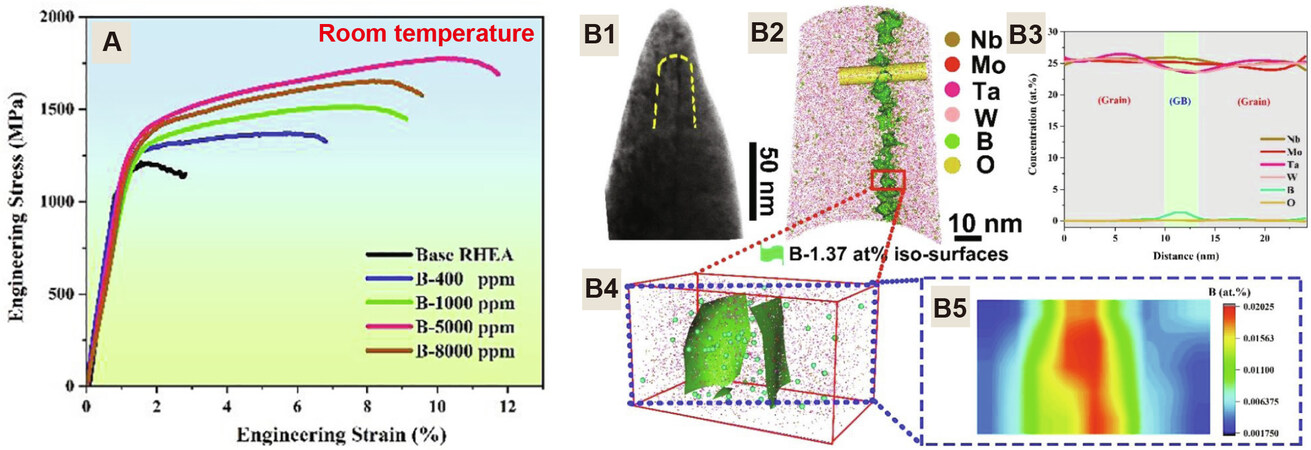









Comments
Comments must be written in English. Spam, offensive content, impersonation, and private information will not be permitted. If any comment is reported and identified as inappropriate content by OAE staff, the comment will be removed without notice. If you have any queries or need any help, please contact us at support@oaepublish.com.